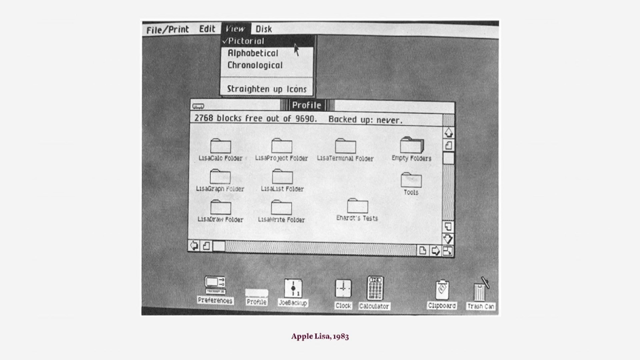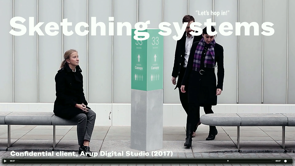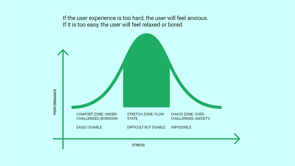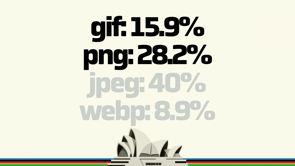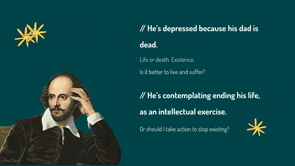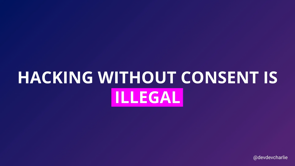Operating a global fully remote product design team
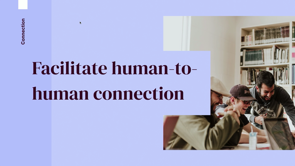
So Platform founded about 10 to 12 years ago, and today we have 405 people, and we've always been fully remote.
The product design team right now has a team of 6, but the whole design team is about a team of 20 to 21, and we are all completely remote.
So hands up right now, who is working remote?
Basically everyone, and of you, who's doing hybrid like there's offices and remote?
And who is just remote like there's no real office?
Sweet Platformers, you don't count.
Sorry, no about you.
So our team, the product design team, strategically, I have tried to make most of the product design team in the same time zone.
I'll talk about that in time zones later on.
I'm the anomaly.
I'm over here in Australia, but right now I'm in a more director role, so I'm not necessarily contributing, and I don't necessarily need to be hands-on and collaborate with product managers, engineers, other designers, et cetera.
But the rest of our company is very spread out; they're every.
Majority, I think, originally were all in Eastern, Western Europe and then a lot of the executive team started to move to the Americas, and then we started to grow a base there.
And today, though we are completely spread out everywhere.
I only found this out the other day about asking my boss how we became completely remote because a lot of people became remote just from COVID.
It was quite rare to have remote companies pre-covid, and that's actually the reason I took this job because I wanted more of a work-life balance.
I wanted me time, and I wanted time for yoga because I'm a yoga teacher as well.
And I found out that they were founded in Paris, and obviously rent in Paris ain't cheap, and there's a bit of a love story.
So the CTO and the head of design fell in love.
They wanted to move out of this Paris city center, so they wanted to move further away.
She's from America.
They moved back to America the CEO wanted to open up in more markets in America, so then he moved over there and they quickly found this issue with the hybrid model of like some people remote, some people in offices that: it became like the French office first, the Americans, French First Americans, and that wasn't very healthy.
So they made a very conscious effort very early on to be completely remote and to make sure that people had equal opportunity to attend meetings, to attend events, to have transparent information shared throughout the company.
Which, I guess my talk today is just about the lessons learned and the things I've sort of come to know after being completely remote.
A lot of my friends when I went remote in 2018 were like, how can you do it?
It's not gonna work.
And it scares some people, but like anything, where there's a will, there's a way.
I heard people say like, "We're not; we don't have the right setup.
We're not; we just can't do it.
Like we need to be face-to-face.
Could be the tech, the hardware they actually need to be in the office for that.
We won't build relationships.
" This is a big thing that I've learned like and heard from people.
That was the biggest fear of being remote.
Like, we're gonna lose that coffee chats in the morning where we find out about how each other's weekend was.
We are not, we're not gonna build relationships and friendships, and that really is fundamental to having a healthy workplace.
And to then collaborating effectively, having a bit of empathy for what someone's going through, like, "Hey, I know that person's stressed out.
I just bought an apartment, and then I went to Paris.
Like, literally, this is my past month and now I'm here and travel and I'm stressed and tired." And if people didn't know that, if I wasn't able to have a one-on-one conversation with my team and say, "Hey, like I'm struggling, like you just need to give me a break or give me a bit of air or something," Like you need to have those conversations to build that rapport.
People said, "Oh, you're not gonna be productive, or other people in the team won't be productive, and you know, we're just gonna suffer as an organization face-to-face; people will slack off." There's so many excuses, and I'm sure you've all thought of them, maybe even experienced some of them yourself.
But there are a lot of benefits, and there are studies out now that prove this and have proven this through covid " Work life balance." People have more time for their family, their friends, their hobbies.
Flexible work hours is one of the that's what drew me.
Maybe it's what draws you, like some people are really productive; 6:00 AM in the morning like me.
Some people like to work through the night.
Another key benefit of being remote is you have access to a much broader, diverse global talent base.
Having access to designers in Lisbon, in Portugal, in Europe, in America, it's amazing.
And really that diversity starts to impact your product or your website that you are working on, because you're gonna have perspectives from completely different cultural backgrounds.
That's only going to enhance what you're actually working on and building.
New opportunities, so for me, I didn't ever think that I would have the opportunity to work on this type of product space in Brisbane, Australia.
We are like the smaller of the three cities for sure, and I never wanted to move to Sydney, Melbourne.
No offense if you're from there, but I'm more laid-back, chill.
I like to wear thongs everywhere.
So I just thought I need to like broaden my horizons to see what else is out there.
24/17, so it is kind of cool that there's always someone online to answer someone's questions.
We're not gonna have people just shipping stuff or changing things without really consulting design.
And if you're a designer, you kind of are a bit of a control freak and a perfectionist as well.
So it's nice to always have someone's eyes and feedback on things.
Higher productivity, for me, more alone time meant more bulk hours actually designing, and I think a lot of designers might feel the same, like having back-to-back meetings or meetings every couple hours.
It's a bigger distraction from your work.
And this is something I'm really passionate about with the team.
I like to make sure, like you need to have at least a four-hour block of time to really design because you need to have space to sort of let go of all the distractions and worries of a day.
Anything else that's like turn your Slack notifications off, put on focus time, and really like get into your zone, get into the flow.
That's what design is like; it is creating.
You need to have space to imagine, to create.
And like for businesses, cost savings, you're not gonna have office rents, and this internally sort of reduces environmental impact.
Which platform is super, going along the direction of trying to reduce our environmental impact.
So three things that really matter, going remote, that I found from my team and the company.
One operational setup.
It's not gonna work unless you have the foundations there.
Otherwise, you're just setting yourself and your team up for failure.
Two, and these last two are more about, in my opinion, design ops or like the culture.
Facilitating connections.
So because you can't have coffee with someone every day, you can't establish like rapport, relationships, and then empathy.
So you have to make a real conscious effort to facilitate connection with your team, and not just with your team, but obviously you're the teams that you work with design, engineering, product manager.
Motivation is the last one, like finding out what drives your designers, making sure that they are showing up for work because they want to be there.
And I know, it's really easy when you're remote to just sort of check out and be like, "I would rather just watch Netflix for the next two hours." And you could kind of get away with that, but only for so long.
So finding out what motivates them and then creating an environment that's going to continue to motivate them.
So, how do you make it work operationally?
I'm gonna chat about that first.
So some of these are no-brainers.
Stable internet.
I mean, if you don't have that, it's just a don't bother to get it.
Async comms, I know that there has been a talk on Async wait, synchronous to asynchronous already, but if you don't have these things, so these are kind of like our tools.
Like we need designers, we need Figma, we need that to work.
If you are using Sketch or what else is there?
Photoshop, I don't know.
I'm a big fan of Figma.
Slack, naturally you need a chat.
You need to have a space where people can communicate effectively, quickly, reliably, when Slack goes down, have a fallback.
We also use matters most, I think is what we use.
Yeah, cool!
Guru, so knowledge sharing.
You might use confluence or something, but there needs to be a single source of truth.
You know, internal processes, how do we do things and documentation or features, and we also use Google Docs for a lot of our sharing.
You might use Dropbox Paper or Notion, but you need to have these tools that can be accessed by anyone anywhere because you need transparent and easy access to information.
Again, operational things here.
So only have meetings when needed.
Our company literally think last month or in the past couple of weeks, so our teams have scaled.
Last year, we went through the most growth we've ever seen.
I think we added like a hundred or maybe even more people in the space of a year.
And our issues became no longer about the actual product and feature development.
It was all change management.
How do we handle so many people coming onto the team and being completely remote?
We ended up having way too many meetings, and that, naturally, I mean, as a designer, that takes away from your time to craft work and to collaborate on things you really need to be collaborating on.
So we have an internal policy now to only have meetings when needed or only invite people who need to be there.
We had design workshops where the entire product management and senior directors were invited, and that was like 50 plus people.
And it really, a workshop only really needs to be like a lead engineer, lead designer, product manager, and a few other stakeholders who have a say or need to have a say in that topic.
And the last one, this took me some time to like wrap my head around because I've been in agencies and I come from a real, like, fast-paced, the best of the best, and it's like very, driven like that.
So I started to want to hire the best skills, so people who were really good people who were better than me at certain things, and that meant, in my mind, that you were gonna end up with a stronger product.
But being remote, if you have someone who causes friction in the team, it just, it makes it a really not nice place to work, but even more so when you're remote, because you really only have those a few opportunities each day to really meet with people.
And I mean, it sucks in the workplace, but you can kind of avoid people.
But when you have to be collaborative, and you need to really trust people, and you need to really connect, and you only have an hour to do that on a call once or twice a week, if you've got an asshole in there, a dickhead, like it's gonna just, you're just gonna hate working.
You're not gonna collaborate, you're not gonna trust each other.
You're not gonna have respect for each other's opinions, and it's gonna create more issues in the long run.
So culture fit is a big thing, and we have a very lengthy interview process and hiring process to make sure that we really have the opportunity to see how people work, to see what their personalities are like, and are they gonna get along with the rest of the team.
Time zone, so this is the elephant in the room.
When I started, they went out on a limb, hiring someone in Australia for the product design role.
All of the product, and again, most of the engineering team as well, was either in Europe somewhere, mostly Paris time zone or in America.
And for me, I wanted flexibility, so I pushed and pushed, and I said, "We can make it work." Two years in, it was just not sustainable for me because I was doing 5:00 AM calls and sometimes 7:00, 8:00, or 9:00 PM calls on different days of the week.
So we changed things up, and we made a conscious effort to choose designers based in a similar time zone.
As you can see here, they're not that similar, but they do have a few hours overlap and once or twice a week we have this sort of a call in these time zones.
So this doesn't happen often, but it does happen because we need to have time as a team to collaborate, as a team to get together and share ideas and to give feedback on each other's work.
But the rest of the team members of the product design team, work in a team or a pod on an initiative.
So you may have streams.
Our initiatives are like observability, so metrics.
We have a designer there.
We'll have an engineering or a check lead.
We'll have a product manager.
As long as these guys can get together a couple times a week in a healthy time zone, then it is gonna be sustainable and it will work.
At the moment, again, I'm directing, so I'm more having one-on-ones with each team member and facilitating their growth and giving them feedback on their projects.
So it's working all right with me being all the way over here, but if I was an individual contributor, three time zones is too much.
So try and keep it to two.
So the second part, so the second and third parts of my talk, I think are the most important, and maybe they're more about like the cultural values that you have in your company.
Facilitating a human-to-human connection is just as important, if not more, I think sometimes than the operational side, and let me explain why.
So we needed to, we, I mean, if you're a designer, I'm sure at some point you've had feedback that's, I just don't like it.
I hate the color pink.
I want less space there.
I want a bigger logo.
And it's not constructive feedback.
We need to understand why.
And it's the same when you do user research.
The more times you ask why, the closer you are to getting to the real juicy insight that you need to do something.
So with feedback, we started to realize, well, if we just, I mean design team, we are getting feedback from users.
We're getting feedback from engineers, we're getting bugs tracked, we're getting product managers say, "No, go in this direction," and it's just a whole lot of negativity coming at you all the time.
We had to start to find ways to coach people to give healthy, constructive feedback, and we did that in our team first, and then we started to educate other people that we work with, so product managers, engineers, developers, and give them a clear opportunity for when to give that feedback instead of just swamping designers all the time.
Foster relationships, so again, we need to make a real conscious effort to do that, and the ways we do that at platform, being completely remote.
We have coffee chats, so get together 15 minutes once a week with someone different from your team or someone else that you work with, and don't set an agenda.
Just be like, "Hey, I just woke up.
Oh yeah, I'm about to go to bed, but let's have a chat.
Maybe it's a wine and a coffee." It doesn't matter.
But it's really just about getting people to understand who it is that you're working with and developing a healthy relationship.
And people don't need to be in love or best friends, but they just need to understand who that person is, what's their communication style like, when do they like to work?
What's going on in their lives?
Like that is really important because it develops trust, and rapport, and respect with your coworker.
Workshop collab time, so the design team gets together once or twice a week on a different topic, and they'll workshop, they'll riff, they'll design together collaboratively.
Figma is great for that.
But instead of it just being about change this, that's not working, we get together, and we design things together, and I mean critique sessions, like they sound negative, so we try and also switch up the language of what we call these things.
And fun time, so we have Figma and chill.
I think I've got a slide on the chill next.
So, Retros, so product design team, we've started to create these Retros of when we work, when we meet, and a few of these things I've already touched on, but it's not just the design team.
So, like I said before, our streams of work, we call them initiatives, and they meet weekly, at least weekly.
So that's like a check-in where they say what, give an update on what they're working on.
Sprint planning: so the design team gets together, and we do sprint planning every two weeks.
Plan out what we're working on, how things are going, check in retros.
So obviously every project should have a retros, what went, what, well, what didn't go well?
Let's improve it next time.
Personal 1:1s, so those are, and really, we try not to give feedback on those or work on actual projects.
It's really just, "How are you doing?
Like, are you happy with the type of work that you're working on?" Something a bit more personal, and then design all hands.
So our teams are split.
We have brand design, which is marketing, visual, Web, digital properties, and then we have product design.
And product design works much closer with the engineering team, development team, and product managers.
And we can often feel very split from the rest of the brand design team, which is like videographers, web designers, content writers, and they're doing a lot of other stuff, but really they're focused on brand and the brand presence.
So we try and get together every two weeks or at least every month, bare minimum every month and we share.
So we share what projects we're working on.
A lot of the time, our features are really technical, and the brand designers don't have that technical knowledge.
So we try and share what we're working on, what's coming up in the product, and vice versa.
We never really understand what's happening in brand because we're not working on those sorts of projects, so we just have a bit of share going on.
And then the last thing I wanna chat about is motivation.
What makes your designers happy?
Do you know?
Do you ever ask them this?
Do you ever like talk to them about it?
Some designers really just care about their career and they wanna keep moving up the ladder.
Some really care about their craft, they wanna create really beautiful work, principle design track for sure.
Some people wanna move into management.
Some people just really wanna work remote because they want quiet and alone time.
Everybody's different.
For me, it was real flexible work hours, and then it started to change as our team started to grow, I realized I really care about people.
Making them happy in the workplace and that, again, came from being burnt out and run down in early on in my career, which was an agency.
You know, you get thrashed 7:00 am to 7:00 pm is the norm, and you have your own, I think, like critical perfectionist judgment of this ain't good enough.
This isn't gonna win a design award; therefore, it's shit.
Therefore, I need to work more, and no one's really given you any like support.
So find out what your designers like to do, and I mean, this is kind of global; it goes across every team.
Find out what makes people happy in their work, and then start to design the work atmosphere, design their work the same way that we spend all this time designing something for our users.
I mean, it seems a bit common sense, maybe, I don't know.
When I wrote this talk and I finished it, I thought, Am I really adding anything new to what people know?
I don't know.
Maybe I'm just mentioning a lot of stuff that you've just thought at different points in time, but being remote, this is just, it's so important to keeping people engaged, keeping people showing up each day.
If they have an atmosphere, if they get to of work that they're passionate about, if they get to choose the work, I definitely don't assign and say, "You're only good at this.
You can only work on that." We also really invest in professional development in our team and in the company as a whole, so we make sure people can say, "I really care about animation.
I wanna start to niche in that." We give them a pathway and a growth plan for that, and we start to give them work along those lines.
But we also don't say, "You can only do that now".
We try and give work that's challenging.
I wonder if I have a slide for this, no.
Challenging, so something that pushes them out of their comfort zone, something that's also a bit of a break.
So for me, I loved, and I don't know why, but I loved doing, like document stuff.
Like I did annual reports way back, and it was such a mindless task that I could just check out, and it was like, "Ah!
This is like my meditative little break from work because it seems real boring." But designers sometimes need a bit of a challenge, a bit of a break, something a bit fun.
So kind of design their work life the same way, like put in that effort, do the research, the user research, and finding out what they need, what they want, how they can grow, yeah!
It seems a bit like design ops this chat.
Some things to watch out for.
So for the remote teams, you will start to notice right away if people are slacking off, if they're not delivering, because you'll see it in their output.
And then you need to find out why.
Is it because they don't have work that they like to do?
Is it because they're set up?
Maybe they don't have an actual office environment, rather than working at like the dining table with kids all around.
That's gonna impact their output.
So talk to them.
Definitely don't let them have Slack notifications turned on all the time.
I have learned this the hard way because I get notifications throughout the night because everyone's online then, and I wake up at 5:00 am and I check it, but I don't leave marketers unread.
I left it as red, and then at the end of the day I'm like, "Shit, there's something I've forgotten." But yeah, stress and anxiety If you're on holiday, you've got Slack notifications left, right, and center emails.
I come back to sometimes 50 plus emails, and that's stressful.
So, I sort of set the stage as a leader.
If you are a leader in your design company, and you're working remote, say, "Hey, turn it off." Like, completely uninstall the app while you're on holidays, even don't check your emails.
Please don't check your emails, and if I see you online, we're gonna have a chat.
Boundaries, so again, clear working hours.
We set this up in our Google Hangouts, like times that we're off, times that we are working.
And a few of these last things, so you'll be able to see this in people's engagement and collaboration.
Are they still interested in the work, or are they checked out?
Are they done?
Is their health declining?
Is there something going on here?
It may not even be work related, but you still need to check in and care.
You don't have that face-to-face chat anymore.
Seeing someone rock up in the workplace, so you really need to make an effort to find out how people are doing.
In isolation I felt this a lot.
I felt like a lot of the senior team was having discussions without me, and I wasn't really able to feel, you know, as a part of the team as I should feel because I'm all the way over here in Australia.
So we then started to set up ways for me to feel more engaged.
So it can be overcome, but again, you need to make a real conscious effort and you need to talk to people to find out like what's not working and be real honest about it.
And I don't wanna end the thing, end the chat on so many negatives, because of course there can be issues anywhere with anything.
But some interesting stats I found, and these are mostly from COVID, which is kind of a silver lining in COVID, but 75% of employees maintain or improve product.
My productivity went through the roof.
I was more productive in four hours than I ever was in a day working under fluorescent lights and then I had another four hours for me, which was great.
So 30% of people do more work in less time, and you might find that you do.
And then you also have more time for exercise, more time for family and friends, more time for cooking and hobbies, and a big one, which is really cool, is less time commuting, therefore less time impacting the environment and naturally savings costs there.
And I will, I think these slides will be shared, but you can just Google these studies; they're out there.
And that's pretty much my chat.
I just wanted to say you can thrive in a remote, fully remote team and environment if you are supported, you have the operational things that are set up and ready to go, and you do have your team and your executive team making a conscious effort to really, I guess, empower the team.
Yeah, that's it.
Got any questions?
Shout out.
Thank you!







